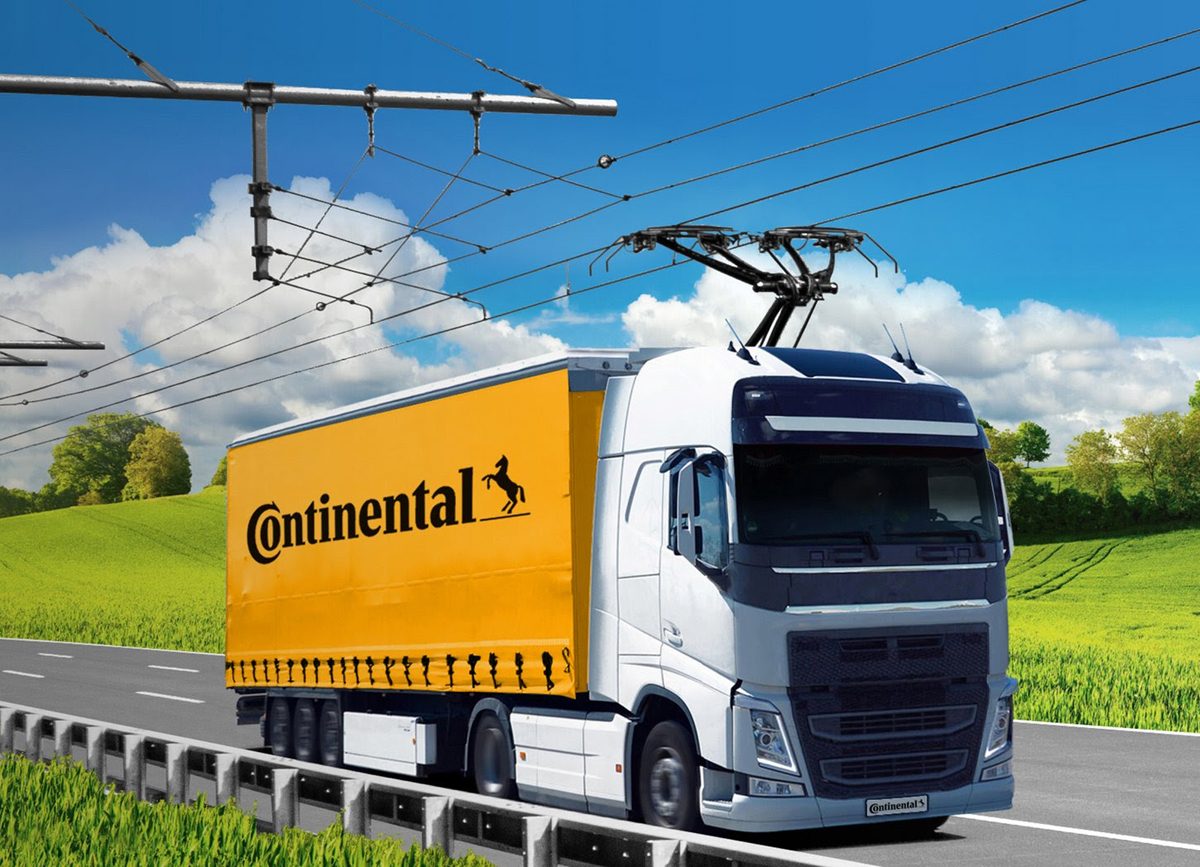Continental’s development and production service provider, Continental Engineering Services (CES), and Siemens Mobility will collaborate in the development and production of current collectors for trucks, so called pantographs. The aim is to electrify key sections of the highway network with an overhead line system, and thus significantly reduce CO2 emissions from trucks, in line with EU regulation 2019/1242. The new partnership brings together the expertise of two worlds of technology: Siemens Mobility is a specialist in rail electrification, while Continental Engineering Services is a development and production service provider for sophisticated automotive technologies. Both companies are now pooling its expertise in order to achieve volume production of current collectors quickly, thus making them available for widespread use in Europe. The eHighway technology supplies trucks with electric drives (e.g., hybrid, fuel cell, or battery-powered electric trucks) on heavily frequented stretches of highway via an overhead cable. Trucks can drive completely electrically while also charging its batteries without consuming fuel. “We are transferring the principle of rail electrification to the road. The current collectors will be developed and produced in accordance with automotive standards. The partnership between Continental Engineering Services and Siemens Mobility is a major step toward climate-neutral freight transport,” explains Dr. Christoph Falk-Gierlinger, Managing Director of CES.

The eHighway technology developed by Siemens Mobility is already ready for use today. Now, it is just a matter of developing the current collectors, especially for trucks, so that they can be offered to commercial vehicle manufacturers cost-effectively and in any desired number of units. “Road haulage plays a central role in the battle against climate change,” says Michael Peter, CEO of Siemens Mobility. “In Germany, it causes one third of the transport sector’s CO2 emissions. Truck manufacturers are pursuing various concepts towards reduction. With the eHighway, Siemens Mobility has already created a ready-to-use technology for energy-efficient, cost-effective and emission-free truck traffic that can be combined with other drives. This may become the backbone for environmental protection in road haulage.”
Rail principle: Electricity from overhead lines over 4,000 kilometers of interstate highway
The key to the eHighway is that not all highway kilometers need to be electrified. The “National Platform for the Future of Mobility,” an innovation initiative of the Federal Ministry of Transport, recommends that 4,000 kilometers of highway be equipped with overhead cable technology by 2030. This is because approximately around two thirds of fuel consumption by long-distance truck traffic on German highways takes place on the most frequently used 4,000 km of the 13,000-km long network. By electrifying the core network and supplying electricity to the trucks driving there with electric drives (e.g., battery, hybrid, hydrogen), a huge and quick contribution to climate protection can be achieved. The solution with electricity from the overhead line corresponds to the rail principle, where only around 60 percent of the rail network is equipped with overhead cables. However, these are the key sections, which means that more than 90 percent of rail traffic in Germany rolls over the rails with electricity from the overhead line. According to a study by the Federal Ministry of Transport, the electrification of German road haulage on a core network of 4,000 km could reduce CO2 emissions by 10 to 12 million tons annually when electricity is obtained from regenerative sources.
In Germany, the eHighway from Siemens Mobility is currently being tested on three publicfield trials: On the A5 interstate highway in Hesse between the junctions at Zeppelinheim/Cargo City Süd at Frankfurt Airport and Darmstadt/Weiterstadt, on the A1 in Schleswig-Holstein between the Reinfeld junction and the Lübeck intersection, and on the B462 federal highway in Baden Württemberg between Kuppenheim and Gaggenau. CES and Siemens Mobility aim to make the truck overhead line system available across Europe. The Ministry of Transport and Digital Infrastructure supports the scaling of overhead lines for long-distance transport in innovation clusters, and intends to implement large pilot plants by 2023.